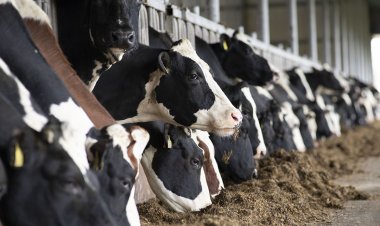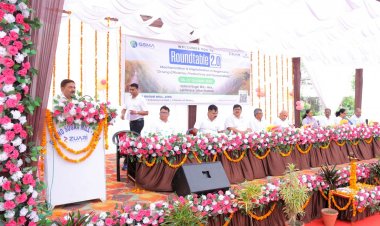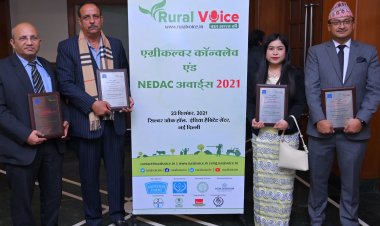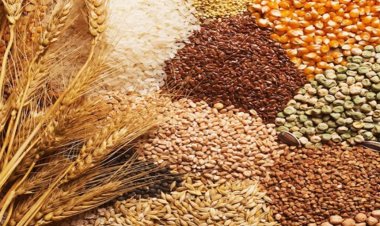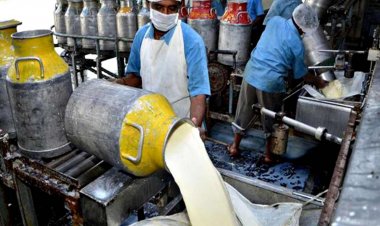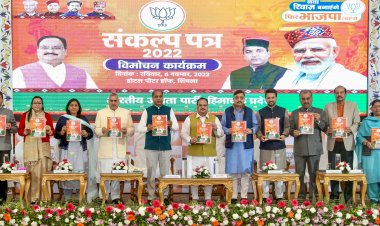Rural Voice Special: Biofertilizers to reduce farming cost, make soils more fertile
Biofertilizers are used through seed and soil treatment. They can reduce the use of chemical fertilizers by 35 to 40 per cent. The use of biofertilizers is not only economically significant but also necessary to maintain soil fertility.
Excessive use of chemical fertilizers and less use of biofertilizers has affected soil health. This has led even fertile soil to deteriorate into the category of barren land. The big question today is how to check the deterioration in soil fertility so that there is a rich harvest of crops.
According to agricultural scientists, besides making available to plants nutrients from organic manure, natural bacteria have been identified and several fertilizers made from them that make the fields fertile and benefit the environment. These are called biofertilizers. Plants get essential nutrients from biofertilizers naturally. Biofertilizers are better and cheaper than chemical fertilizers.
Dr K Annapoorna, former head, Microbiology Division, Indian Agricultural Research Institute (IARI), Pusa, New Delhi, spoke about the necessity of biofertilizers for sustainable farming in the Rural Voice Agritech Show. You may watch this episode of the show by clicking on the video link given above.
Dr Annapoorna said that first of all, it was necessary to adopt the Integrated Nutrient Management (INM) system. There is a balanced use of naturally available organic manure, biofertilizers and chemical fertilizers in this system. The three nutrient sources are used in the ratio of 1 : 2 : 2 according to the need of the crops. Besides making nutrients available to the plants, natural organic manure also increases the availability of carbon in the soil. It increases the number of good microbes in the land, which in turn keeps the soil in good health. Farmers can enhance the fertility of the soil through the use of biofertilizers. Dr Annapoorna said that besides green manure and compost, natural bacteria are identified and several biofertilizers are made from them.
She said that in order to provide nitrogen, Rhizobium Culture is used in pulse crops and Azotobacter, Azospirillum and Acetobacter in cereals. Besides, blue-green algae are used to provide nitrogen to the paddy crop. Phosphobacter, Aspergillus, Penicillium, Pseudomonas and Bacillus biofertilizers are used so as to make phosphorus available to the crops. Bacillus, Frateuria and Acetobacter are used to provide potash and iron to the crops.
Dr Annapoorna said that biofertilizers were used through seed and soil treatment. They can reduce the use of chemical fertilizers by 35 to 40 per cent. The use of biofertilizers is not only economically significant but also necessary to maintain soil fertility.
There are two kinds of biofertilizers: solid carrier-based and liquid-based. Dr Annapoorna said that seed treatment was the best method to use biofertilizers. Solid biofertilizers come in packs of 200g and liquid ones in bottles of 50 ml and 100 ml. In order to treat the seeds with biofertilizers, a solution is first prepared by mixing 50g of gud (jaggery) in half a litre of water. And then a quantity of 200g of a particular biofertilizer such as Rhizobium Culture, Azotobacter or PSB Culture is mixed in this solution. The solution thus prepared is sprayed on seeds for an acre so that a layer of the solution forms on each seed. The treated seeds are then dried in shade for some time and once they have dried up, they are sown in the fields immediately. In case of liquid biofertilizers, 100 ml is used for seeds for an acre. But the application method is different in this case. Liquid biofertilizer can be given to the plants through a drip irrigation system, soil drenching and irrigation.
Sudhir Agarwal, a progressive farmer from the Bhureka village in Mathura district of Uttar Pradesh, told Rural Voice that he had been using biofertilizers for several years, reducing the use of chemical fertilizers. He said that the fields had lacked in several nutrients earlier, but the constant use of biofertilizers for several years had now increased their fertility and also improved the quality of the produce that their fields yielded. He said that about 30 per cent less chemical fertilizers had to be used in the fields now.
Agarwal said that he used biofertilizers in several crops, including paddy, wheat, grams, mustard, moong, potato and arhar. Their use had led to an increase in crop yields and a reduction in costs. Agarwal suggested that farmers should reduce the use of chemical fertilizers and go for seed treatment with biofertilizers and soil treatment before sowing the seeds.



 Join the RuralVoice whatsapp group
Join the RuralVoice whatsapp group



















